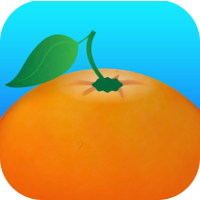Citrus App
This app is designed to help citrus producers in Florida, USA to generate irrigation schedule recommendations based on real-time weather and short-term forecast to better meet water needs of a given period, conserving water while also minimizing nutrient leaching from the root zone due to excessive irrigation.
Producers can register fields in the app and receive notifications regarding irrigation schedule changes due to differences in the expected evapotranspiration for the next few days.

Citrus model development was led by Dr. Morgan. Dr. Morgan previously developed a computer-based decision support system to facilitate more efficient use of water and nutrients by basing recommended application rates on site specific characteristics and local weather data. This web based tool is quite complex but has proven useful by citrus growers. The web-based tool provides information to maintain plant available soil water to meet crop needs. Because of the low water holding capacity of these Florida citrus soils, soil water content must be maintained within a relatively narrow range such that water availability to the crop does not limit growth or adversely impact yield or quality (Morgan et al. 2006a). The FAWN web-based tools currently uses the ETc proposed by Allen et al. (1998):
![]() (2)
(2)
where ETc is crop evapotranspiration (mm d-1), ETo is potential evapotranspiration (mm d-1), Kc is crop coefficient, and Ks is soil water depletion coefficient. The crop coefficient (Kc) is defined as the ratio of ETc to ETo when soil water availability is non-limiting. In this case, the soil water depletion coefficient (Ks) is assumed to be equal to unity. Kc is indicative of climatic and/or developmental effects on ETc compared with ETo. Estimates of Kc for a wide range of citrus tree sizes span from 0.6 in the fall and winter to 1.2 during the summer months (Rogers et al. 1983; Boman 1994; Martin et al. 1997; Fares and Alva 1999). Allen et al. (1998) described Ks as:
![]() (3)
(3)
where TAW is total available water (cm3 cm-3) (field capacity [FC] minus wilting point [WP]), qWP is permanent wilting point soil water content (cm3 cm-3); q is soil water content (cm3 cm-3); qFC is field capacity soil water content (cm3 cm-3); and RAW is readily available water (cm3 cm-3). The greater the RAW for a given soil, the longer water can be withdrawn from it before ETc is limited. Thus, Ks is a measure of the reduction in ETc caused by reduced soil water uptake due to decreased soil water and WP. However, our experience in Florida has suggested that RAW in sandy citrus soils is much smaller than the relative amount suggested by Allen et al. (1998).
When managing water for citrus production, water content must be maintained within a range that allows sufficient water uptake for optimum growth while simultaneously preventing nutrient leaching below the root zone. Although the upper limit of soil water is typically defined as FC, the soil water content at which redistribution of water essentially ceases after free drainage occurs (Hillel 1998), the lower limit (permanent WP) is harder to define and depends greatly on soil physical characteristics. If the effects of soil physical characteristics on soil water availability are known, water can be maintained within appropriate limits and the potential for both crop water stress and agrichemical leaching will be minimized. These concepts have been integrated into the FAWN citrus web-based tool and have been validated by growers.
The citrus Smartphone app for irrigation scheduling will use estimated soil water balances in multiple soil areas and layers under a mature citrus tree using tree spacing and irrigation system information provided by the user (Beck et al. 2006; Morgan et al. 2006b). The app will differ from the web-based tool in its ability to store information within the app (including cumulative water savings), integration of new research information on citrus irrigation (collected by Dr. Morgan), the inclusion of forecasting data for irrigation planning, and having a mobile user interface. The citrus app will provide users with an irrigation schedule based on a water balance and real-time weather and forecasted data intended to conserve water while also minimizing nutrient leaching from the root zone.


